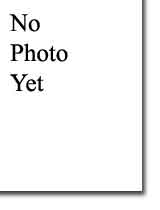San Francisco Landmarks

City Cemetery
Lincoln Park
Established 1870
Closed 1898
37°47'01.8"N 122°29'48.7"W
City Cemetery was established at the end of the Rural Cemetery movement. Rural cemeteries were beautiful places that were popular destinations for recreation.
In 1866, the United States Congress granted to San Francisco most of the “Outside Lands,” extending the city west to the Pacific Ocean. In 1868, the Board of Supervisors designated approximately two hundred acres near Lands End as a municipal cemetery.
Working class people commonly joined fraternal, ethnic, religious, and professional associations to assure that their bodies would be cared for after their passing. City Cemetery had at least twenty-four sections operated by benevolent, social, and religious societies for interment of their members.
City Cemetery was the final resting place of socioeconomically marginalized people. If a person was indigent, the City and County of San Francisco was responsible for interment of the body. More than 10,000 people were buried in the indigent sections of the cemetery, their graves often marked with a simple wooden marker with a sequential number rather than a name
In 1893, the Federal Government reclaimed the southwest portion of City Cemetery to construct Fort Miley.
In 1898, San Francisco banned new burials at City Cemetery. Two years later interment within the city was outlawed. After 1900, large private cemeteries in San Mateo County became the final resting place for the majority of deceased San Franciscans.
In 1909, San Francisco directed interested parties to disinter their dead, but only a few hundred remains were removed before the City Cemetery was converted to a park and golf course. The City and County of San Francisco made no attempt to remove the remains of indigents.
Extant records indicate that more than 29,000 people were buried in City Cemetery between 1870 and 1898. Between 10,000 and 19,700 burials remain in the park.
In 1921, an estimated 1,500 coffins and human remains were uncovered during construction of the Legion of Honor museum. In the 1990s, remains of almost 750 individuals from an indigent section of City Cemetery were unearthed when the museum was expanded.
The elaborate Ladies’ Seaman’s Friend Society obelisk exhibits Victorian tastes for “sentimentality, melancholy, romanticism, and didactic moralism.”
The Kong Chow structure was probably an altar. The Chinese characters translate to “Temporary Resting Place for Coffins Being Sent to Kong Chow Province.”
Source: Adapted from San Francisco Landmark Designation Application.